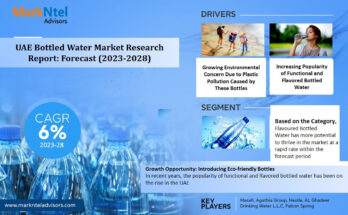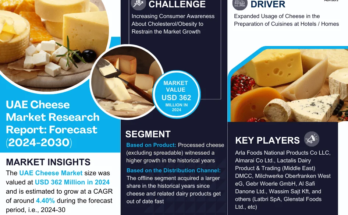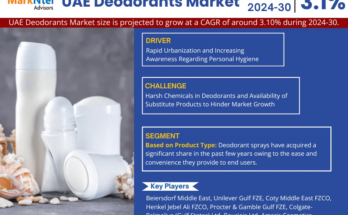The Bleaching Clay Global Market Report 2024 by The Business Research Company provides market overview across 60+ geographies in the seven regions – Asia-Pacific, Western Europe, Eastern Europe, North America, South America, the Middle East, and Africa, encompassing 27 major global industries. The report presents a comprehensive analysis over a ten-year historic period (2010-2021) and extends its insights into a ten-year forecast period (2023-2033).
Learn More On The Bleaching Clay Market:
https://www.thebusinessresearchcompany.com/report/bleaching-clay-global-market-report
According to The Business Research Company’s Bleaching Clay Global Market Report 2024, The bleaching clay market size has grown strongly in recent years. It will grow from $1.44 billion in 2023 to $1.53 billion in 2024 at a compound annual growth rate (CAGR) of 6.3%. The growth in the historic period can be attributed to growth of the petrochemical industry, expansion in the cosmetics industry, water treatment applications, development of sustainable practices, globalization of the food industry..
The bleaching clay market size is expected to see strong growth in the next few years. It will grow to $1.96 billion in 2028 at a compound annual growth rate (CAGR) of 6.3%. The growth in the forecast period can be attributed to increasing demand for oleochemicals, stringent quality standards, rise in health consciousness, demand from the bio-based lubricants industry, focus on clean label products.. Major trends in the forecast period include technological innovations in oil refining, strategic collaborations and partnerships, focus on sustainable and eco-friendly products, technological advancements in clay activation processes, r&d efforts for specialty applications,.
The increasing demand for refined vegetable oil is expected to propel the bleaching clay market. Refined vegetable oil refers to vegetable oil that has been degummed, deacidified, decolored, and deodorized. Bleaching clay, primarily made of montmorillonite, is used to bleach vegetable oils as an adsorbent clay which eliminates impurities that negatively affect the appearance and functionality of these triacylglycerol-based materials to achieve the high-quality oil standards necessary for edible applications. For instance, in March 2022, according to an article published by the International Olive Oil Council, a Spain-based intergovernmental association of states that produce olives or manufacture olive-derived products like olive oil, consumption of oil is expected to exceed 3.2 million tons in 2021/22. Global consumption of olive oil is expected to reach 3,214,500 tons in the 2021/22 crop year, a 2.9% increase over the 2020/21 crop year. Thus, increasing demand for refined vegetable oil drives the bleaching clay market.
Get A Free Sample Of The Report (Includes Graphs And Tables):
https://www.thebusinessresearchcompany.com/sample.aspx?id=8871&type=smp
The bleaching clay market covered in this report is segmented –
1) By Type: Activated Bauxite, Activated Clays, Fuller’s Earth
2) By Application: Industrial Oil, Mineral Oil and Waxes, Vegetable Oil and Animal Fats
3) By End-user Industry: Food and Beverage, Cosmetics and Personal Care, Chemicals, Other End-user Industries
Product innovation is a key trend in the bleaching clay market. Major companies operating in the market are advancing toward developing innovative products to gain a competitive edge in the market. For instance, in February 2021, Clariant, a Switzerland-based specialty chemicals company, introduced DESVOCANT, an innovative line of mineral-based clay adsorbents to reduce the potential exposure of merchants, shipment handlers, and consumers to VOCs (volatile organic compounds) that pose serious health risks if inhaled. DESVOCANT adsorbents are based on a non-toxic, naturally occurring clay mineral called bentonite, which is granular when dry and enclosed in an airtight sack to control and reduce the accumulation of common VOCs due to off-gassing. It minimizes the costs and problematic delays of needing gas detection equipment, personnel respirators, or extensive ventilation in the product distribution chain. The DESVOCANT adsorbents can also be blended and packaged with other materials to meet cargo protection needs.
The bleaching clay market report table of contents includes:
- Executive Summary
- Bleaching Clay Market Characteristics
- Bleaching Clay Market Trends And Strategies
- Bleaching Clay Market – Macro Economic Scenario
- Global Bleaching Clay Market Size and Growth
.
.
.
- Global Bleaching Clay Market Competitive Benchmarking
- Global Bleaching Clay Market Competitive Dashboard
- Key Mergers And Acquisitions In The Bleaching Clay Market
- Bleaching Clay Market Future Outlook and Potential Analysis
- Appendix
Contact Us:
The Business Research Company
Europe: +44 207 1930 708
Asia: +91 88972 63534
Americas: +1 315 623 0293
Email: [email protected]
Follow Us On:
LinkedIn: https://in.linkedin.com/company/the-business-research-company
Twitter: https://twitter.com/tbrc_info
Facebook: https://www.facebook.com/TheBusinessResearchCompany
YouTube: https://www.youtube.com/channel/UC24_fI0rV8cR5DxlCpgmyFQ
Blog: https://blog.tbrc.info/
Healthcare Blog: https://healthcareresearchreports.com/
Global Market Model: https://www.thebusinessresearchcompany.com/global-market-model




